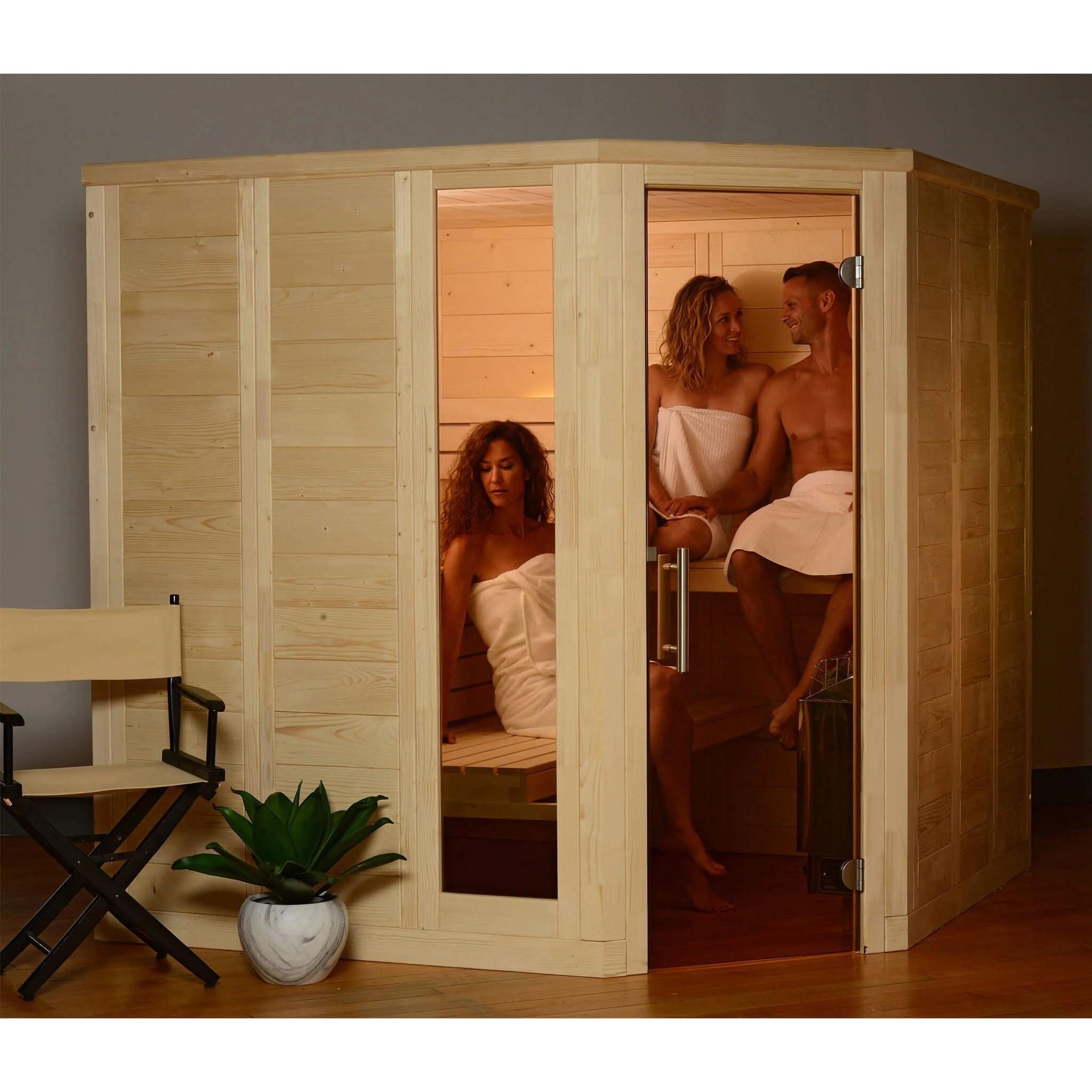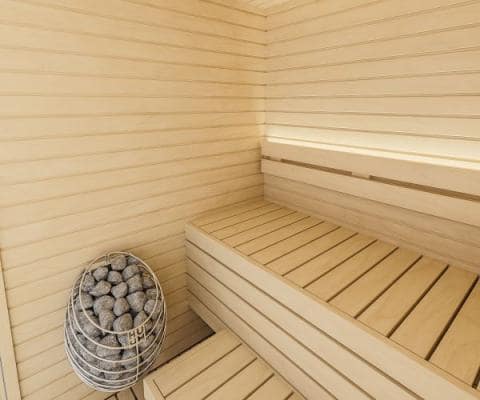Things about Traditional Sauna
Things about Traditional Sauna
Blog Article
The Main Principles Of Traditional Sauna
Table of ContentsThe Ultimate Guide To Traditional SaunaWhat Does Traditional Sauna Mean?10 Simple Techniques For Traditional Sauna5 Easy Facts About Traditional Sauna DescribedThe Buzz on Traditional Sauna
Most of the weight lost in a sauna is water loss and is re-gained upon rehydrating. Nevertheless, undoubtedly sauna can be an important component of a healthy and balanced weight reduction program. To check out the differences between typical and IR saunas, I will separate these right into proven, theoretical, and made differences.Thus, the best point in the saunawhich is at the ceiling straight over the sauna heateris usually between 185 and 190 F. Claims that a typical sauna surpasses 200 F is just not real and not suitable for electric saunas marketed in the US. The temperature level for a far-infrared sauna is usually set between 120 and 140 F; however, unlike the typical sauna, the goal in and IR area is not to accomplish a high temperature level.
As a result of this, the temperature difference is almost irrelevant, considering that extreme sweating leads to both sauna kinds, but the technique of warming the body is different. In an IR sauna the bather will certainly feel warm and will sweat profusely, yet at much reduced temperature levels (Traditional Sauna). Therefore, if the objective is to spend longer durations of time in the sauna, the IR sauna is a great option
When a typical sauna has been properly heated up, the sauna walls are cozy, the air temperature has accomplished established temperature and the rocks are super heated. As an interesting side note, the heated walls and the rocks are releasing far-infrared warmth, combined with the heated air, to develop an "wrapping up heat".
The 3-Minute Rule for Traditional Sauna

When the heat is accomplished, the elements cycle on and off to maintain the heat. A lot of conventional sauna users enjoy putting water over the rocks to produce steam to raise sauna moisture levels. The benefits of putting water over the rocks include: making the space a lot more comfortable, moistening the nasal flows, and allowing the use of aromatherapy by blending essential oils with the water.

When the power goes into the body, it creates the body temperature to increase and ultimately results in sweating. In an infrared sauna it is very important for the emitters/heaters to stay on practically frequently. Because there is no mass of rocks to preserve warmth, the sauna will certainly cool down if the emitters shut down.
As discussed over, the sauna bather in an infrared room wishes to place himself before operating emitters to get optimal benefit from the heat. The heating time for the 2 spaces can be very various, relying on just how the areas are used. For a typical sauna, a bather ought to enable 30-40 mins for the space to achieve a preferred temperature level and to correctly pre-heat the rocks.
The smart Trick of Traditional Sauna That Nobody is Talking About
A well constructed sauna will usually attain a temperature of 150-160 F in about 30-40 mins. For hotter temperature levels, the room might require to warmth for a longer duration.

Typical saunas tend to be bigger (for this reason use more power) than infrared saunas, although conventional saunas are absolutely available in one and 2 person sizes. For a two-person typical sauna, 5x6 or 5x7 size is most prominent. The leading bench can comfortably seat two or three individuals and is additionally enough time to rest throughout the sauna session.
Traditional Sauna Fundamentals Explained
The ordinary cost per kWH of electrical power in the U.S. is around $0.11, so a 4.5 kW heating system will certainly set you back about $.50 to run for one hour, if the heater runs continually for one hour. Typically a sauna heater will compete 75% of the initial hour and 50% of subsequent hours on because the elements cycle once the set temperature is accomplished.

There is a rarely talked about difference in the social experience in between the two rooms. While our society has lost several of the social benefit of the typical sauna experience, it can be extremely socially satisfying (Traditional Sauna). From family members time in the sauna, to heart-felt discussions with better halves, to sauna partiesthe standard sauna experience go to website can result in intimate socializing
Traditional Sauna Fundamentals Explained
A lot of higher end infrared spaces consist of tinted light therapy, audio systems and full-glass fronts.
Report this page